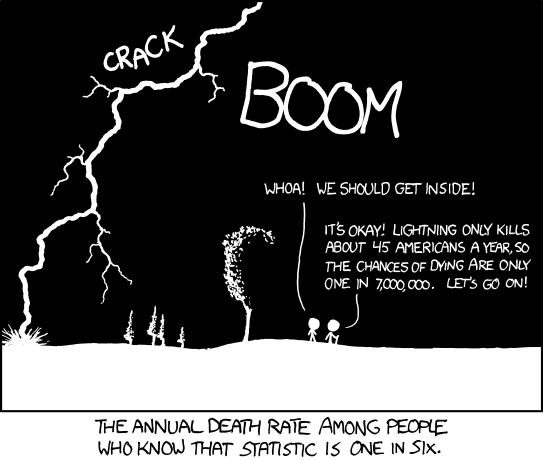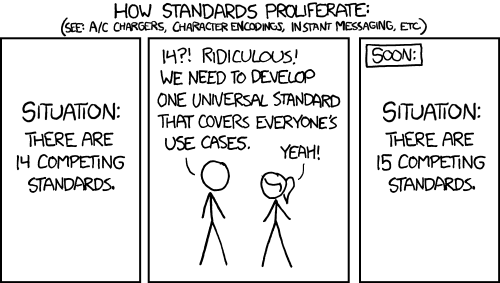flowchart LR A[Endpoint] --> B(Ecological) A --> C(Human)
Introduction to risk assessment
with human and ecological endpoints
2024-09-02
The “first” risk analysis
Arnobius’ Risk analysis table was done to support the decision to accept Christianity or not.
| Decision | GOD exist | GOD does not exist |
|---|---|---|
| Accept Christianity | Risk low | Risk low |
| Remain a Pagan | Risk high | Risk low |
- Based on dominance, the best decision is here to accept Christianity.
A modified version by Pascal
Pascals risk analysis involving the existence of God.
| Decision | GOD exist | GOD does not exist |
|---|---|---|
| Believe | \(+\infty\) | -1 |
| Don’t believe | \(-\infty\) | 1 |
- Finite losses and gains are dominated by the infinite ones
- Since not believing has a possibility of infinite loss, the rational decision is to believe in God.
A difficult risk analysis - amniocentesis
Decision problems are difficult when there is no dominating option. This is where risk analysis is needed.
Let us consider the decision problem if the parents are to make an amniocentesis (fostervattenprov) with the purpose to discover abnormal fetal conditions. A result from this test, might be used to justify an early abortion.
A difficult risk analysis - amniocentesis table
| Decision | Foetus is not normal | Foetus is normal |
|---|---|---|
| Make an amniocentesis | Risk medium | Risk medium |
| Do nothing | Risk high | Risk low |
A difficult risk analysis - amniocentesis details
In this problem,
the decision to make an amniocentesis depends on how the decision maker relates low, medium and high to each other.
Careful assessment of the risks using methods which weight available evidence are in this case required to make a decision.
In addition, parents experience troubles in understanding the accuracy of the test, how to interpret test outcomes, and find it difficult to make a decision when they get a positive test result.
A difficult risk analysis - amniocentesis ethical dimensions
This problem also have an ethical dimension:
Is it ethical to do abortion?
Is it ethical to put the foetus into danger by making a test, that itself can result in damage to the foetus?
The distinction into normal and not normal reflects values not shared by all.
What is risk?
ISO 31000:2018 definition: Risk is the effect of uncertainty on objectives
- Objectives - Decision context
Uncertainty is considered the state, even partial, of deficiency of information related to, understanding or knowledge of, an event, its consequences or likelihood.
- Uncertainty - limitations in knowledge or future events
- Retrospective vs Prospective risk
- Effects can be positive and negative
What is risk analysis?
Working principles for risk analysis FAO/WHO Codex alimentarius
A risk analysis should be:
- applied consistently
- open, transparent and documented
- be scientific
- evaluated and reviewed as appropriate in the light of new scientific data
What is risk analysis?
Three main components
risk assessment
risk management
risk communication
Effective communication and consultation with all interested parties should be ensured throughout the risk analysis.
Separate assessment and management
There should be a functional separation of risk assessment and risk management, in order to ensure the scientific integrity of the risk assessment, to avoid confusion over the functions to be performed by risk assessors and risk managers and to reduce any conflict of interest.
However, it is recognized that risk analysis is an iterative process, and interaction between risk managers and risk assessors is essential for practical application.
What is risk assessment?
US EPA as relevant example
Risk is the chance of harmful effects to human health or to ecological systems…
…resulting from exposure to an environmental stressor.
- Stressor: any physical, chemical, or biological entity that can induce an adverse effect in humans or ecosystems.
Risk assessment
Planning
Problem formulation
Analysis
Risk characterisation

Involved in planning:
decision makers or risk managers
risk assessors and scientific experts
interested parties or stakeholders
Ecological risk assessment

The objective of the problem formulation phase is to:
refine the objectives for the risk assessment
determine which ecological entities are at risk
determine which characteristics are important to protect
- assessment endpoints
Assessment endpoints
An ecological entity can be defined at one or more levels:
A species
A functional group of species
A community
An ecosystem
A specific valued habitat
Ecological relevant & Susceptible to stressors & Relevant to management goals
Analysis of Exposure and Effects

Evaluate ecological responses to stressors under exposure conditions of interest
Exposure profile
Stressor-response profile or ecological effects analysis
Risk characterisation

Assessors should
- describe risk
- indicate overall degree of confidence in risk estimates
- summarise uncertainties
- cite evidence supporting assessment
- interpret the adversity of ecological effects
Framework and example

Objective: Prevent loss of biological diversity
Endpoint: Viability of sensitive species
Stressors
- Introduction of invasive species
- Use of chemicals in the environment
Conceptual models and frameworks
Direction of cause and effect
Complexity and system boundaries
Retro- or prospective, or both

Risk Assessment with Human Endpoints















Risk assessments with ecological endpoints
Environmental/Ecological Risk Assessment
Chemical stressor(s) -> Ecological systems Manage stressors
Red List Assessment Multiple stressors -> Species Conservation of threatened species, Reduce loss of biodiversity
Pest Risk Assessment Spread of invasive species or pests affecting ecological systems
Risk assessments with human endpoints
Human Health Risk Assessment Chemical stressor(s) -> human health
Pest Risk Assessment Spread of pests or diseases -> human health
Conceptual models and frameworks
What to assess?
How to characterise risk?
- Qualitative
- Quantitative
How to assess it?
- Expert opinion
- Data analysis
- Simulation modelling
Risk perception
How people (the public, experts, risk managers) perceive risk
It might not be the same as “objective” risk estimates

Risk perception
What is right or wrong

Risk perception - example World Economic Forum
Risk assessment as a scientific method
Agreed guidelines and frameworks
Principles to draw scientific conclusions given available data, evidence and expert knowledge considering limitations in this knowledge
Scientific assessment - assessment done by organisation providing scientific advice to risk managers and policy makers
- hazard, exposure, risk, vulnerability
- transparency and impartially
Guidelines and standards
An expert on risk assessment must be familiar with reading guidelines or standards of how to perform assessment
These may differ between different organisations



